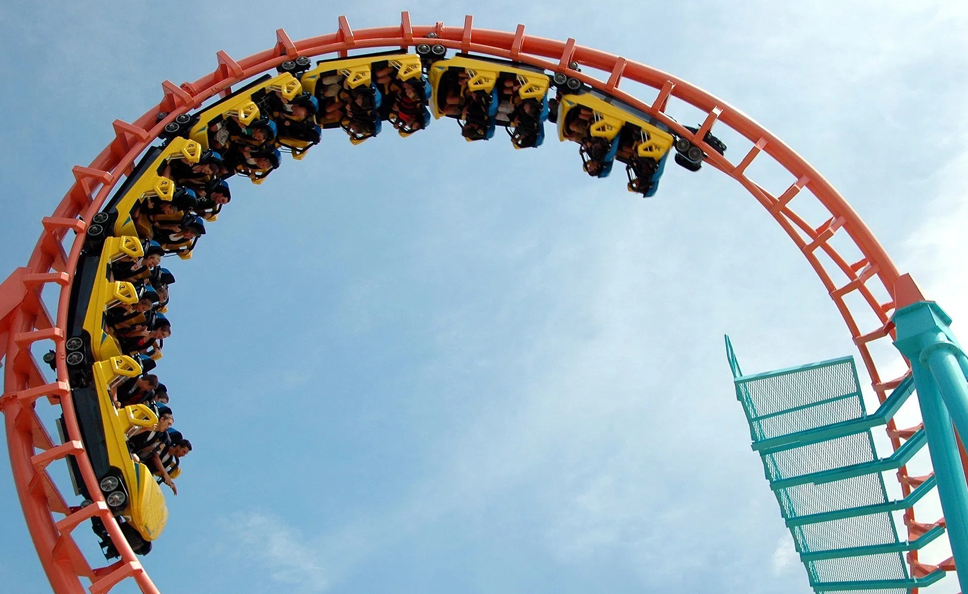
How To Get Over That 3pm Slump
Don’t ride the blood sugar rollercoaster. This one is hard to get off.
We’ve all been there. You’re busy at your desk all day, you just grab something when you have a spare moment and the rest of the day goes by in a blur. Then at 3pm you hit a wall, your energy sags and you hit that dreaded slump. That’s when the brain fog, inability to concentrate and lethargy sets in.
The immense sugar cravings in our body are demanding quick energy and it is demanding it now. Our bodies are like cars – if we don’t provide them with the fuel they’re not going to run properly, no matter how many energy drinks we chug back.
The foods we eat, or don’t eat, play a huge role in influencing how we feel and how we perform at work and at home.
Skipping meals or exercise causes our blood sugar levels to drop, with our internal physiology then prompting us to eat, manifesting at the very least with a grumbly stomach. However, managing our blood sugar levels also swings in the other direction, with some foods causing less than ideal spikes in energy, causing our energy levels to mimic being on a rollercoaster.
SO WHAT EXACTLY ARE OUR BLOOD SUGAR LEVELS?
In a nutshell, this is the concentration of glucose/sugars in our blood at any given time. Our body likes this to sit relatively stable throughout the day, although they will constantly fluctuate depending on what we’re eating and how much energy we’re expending. An underestimated key to our health and well-being is this blood sugar level regulation, and learning to manage it better will lead to improved moods, concentration and energy levels. Making you ready to take on the day, and maybe the world.
Some foods will affect our blood sugars more so than others, causing a rapid spike in the amount of glucose in our bloodstream, and therefore our energy too. However, our body can only handle so much glucose in the bloodstream at any given time before it has to be removed by a nifty hormone called insulin – and what goes up must come down, in mirrored force, often leading to a crash in energy levels, contributing to feelings of fatigue, hunger, crankiness and sugary food cravings. (Chocolate run anyone?)
SO WHAT’S THE BEST WAY TO CONTROL MY BLOOD SUGAR LEVELS THROUGH THE FOODS I EAT?
1. Take into consideration the glycaemic index (GI) of your foods
Carbohydrate foods directly affect our blood sugar levels. When we eat carbohydrates they’re broken down and release glucose/sugars into our bloodstream. The measure of how quickly they release this is known as the glycaemic index.
- Carbohydrate foods deemed high glycaemic release glucose very quickly into the blood stream, giving us a quick burst of energy– much like petrol on a flame. These are known as simple sugars and include foods such as processed sweets, watermelon and white bread. As high GI foods cause our blood sugar to rise rapidly, meals high in these types of carbohydrates may cause substantial fluctuations in blood sugar levels.
- Foods that are known as low glycaemic release glucose slowly into the bloodstream, giving us a sustained release of energy – much like slow-burning logs on a fire. These are known as complex sugars and include foods like grainy bread or oats, or as a rule of thumb, many foods high in fibre. Low GI foods are slow to be digested and so they’re great for weight management and keeping us full between meals.
It is important to keep in mind GI is not a measure of health – you can get both healthy and unhealthy high and low GI foods, packed full of nutrients. However, it can be good to keep in mind balance and portion size – aiming to eat low GI foods at main meals, in portion with other foods, will help will supplying us a slow steady source of energy, from one meal to another.
2. Always include a protein source with each meal.
Protein (and fat for that matter) don’t have an effect on our blood sugar levels in the way that carbohydrates do. They can actually soften the effect of GI as they take longest to be digested, and so slow everything down as it moves through our digestive system. Given this, protein makes for a very satiating food, helping to keep us full between meals.
To put this into practice make sure to include protein-rich foods such as chicken, meat, eggs or chickpeas to your main meals, or enjoying cheese and nuts or yoghurt with fruit as snacks.
3. Don’t skip meals, silly!
When we skip meals, we’re skipping fuel, and our blood sugar levels will naturally drop. When our blood sugar levels are low, we’ll struggle to be on our game mentally, physically, and even emotionally (ever experienced being “hangry”? hungry/angry?). We’re also more likely to make poor food choices, craving sugary treats too quickly pick back up our energy levels.
To help keep your blood sugar levels stable make sure to eat regularly throughout the day, and include a mid-morning or afternoon snack if this works well for you.
Make time for yourself and fuel your body correctly and this will give you the energy to last the entire day.
Want the how-to on health and wellness? Danijela is expertly expert in all things nutrition. Visit her website: healthyalways.co.nz, follow her on Instagram at @healthyalways and like her Facebook page, Healthy Always.

